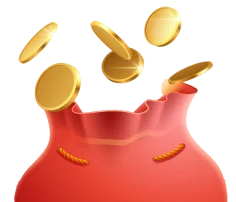Please allow ads on our site
Please log in to access this content. You will be redirected to the login page shortly.
LoginWhat are heterotrophs
Science Primary School in Science 8 months ago
What are heterotrophs ?
Heterotroph (/ˈhɛtərəˌtroʊf, -ˌtrɒf/; Ancient GREEK ἕτερος héteros = "other" plus trophe = "nutrition") is an ORGANISM that cannot produce its own food, instead taking nutrition from other sources of organic carbon, mainly plant or animal matter. In the food chain, heterotrophs are primary, secondary and tertiary CONSUMERS, but not producers.
More Information about heterotrophs :-
Living organisms that are heterotrophic include all animals and fungi, some bacteria and protists, and many parasitic plants. The term heterotroph arose in microbiology in 1946 as part of a classification of microorganisms based on their type of nutrition. The term is now used in many fields, such as ecology in describing the food chain.
Heterotrophs may be subdivided according to their energy source. If the heterotroph uses chemical energy, it is a chemoheterotroph (e.g., humans and mushrooms). If it uses light for energy, then it is a photoheterotroph (e.g., green non-sulfur bacteria).
Heterotrophs represent one of the two mechanisms of nutrition (trophic levels), the other being autotrophs (auto = self, troph = nutrition). Autotrophs use energy from sunlight (photoautotrophs) or oxidation of inorganic compounds (lithoautotrophs) to convert inorganic carbon dioxide to organic carbon compounds and energy to sustain their life. Comparing the two in basic terms, heterotrophs (such as animals) eat either autotrophs (such as plants) or other heterotrophs, or both.
Detritivores are heterotrophs which obtain NUTRIENTS by consuming detritus (decomposing plant and animal parts as well as feces).[6] Saprotrophs (also called lysotrophs) are chemoheterotrophs that use extracellular digestion in processing decayed organic matter; the term most often used to DESCRIBE fungi. The process is most often facilitated through the active transport of such materials through endocytosis within the internal mycelium and its constituent hyphae.
Explanation:
Posted on 19 Dec 2024, this text provides information on Science related to Primary School in Science. Please note that while accuracy is prioritized, the data presented might not be entirely correct or up-to-date. This information is offered for general knowledge and informational purposes only, and should not be considered as a substitute for professional advice.
Take Quiz To Earn Credits!
Turn Your Knowledge into Earnings.

No matter what stage you're at in your education or career, TuteeHub will help you reach the next level that you're aiming for. Simply,Choose a subject/topic and get started in self-paced practice sessions to improve your knowledge and scores.

